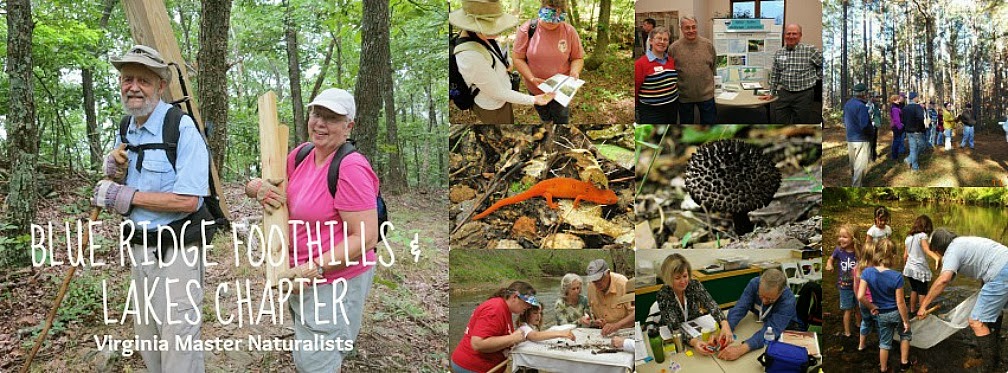 The BRFAL Chapter of the Virginia Master Naturalists has lucked out yet again with another excellent guest speaker. On Thursday, January 19th, Dr. Ronald Hanawalt came to our meeting and gave a very informative lecture on “Bee Trees”. OK, maybe you are ahead of me, but I didn’t really know what bee trees were until Dr. Hanawalt’s visit.
The BRFAL Chapter of the Virginia Master Naturalists has lucked out yet again with another excellent guest speaker. On Thursday, January 19th, Dr. Ronald Hanawalt came to our meeting and gave a very informative lecture on “Bee Trees”. OK, maybe you are ahead of me, but I didn’t really know what bee trees were until Dr. Hanawalt’s visit.But let me digress for just a second to tell you that “Dr. Hanawalt” is actually just Ron to me. I am his next door neighbor in Hardy and a more down to earth “Doctor” you won’t find anywhere. He is a graduate from Rutgers University which happens to be my Alma Mater as well. He has lived in the Hardy area for about 24 years. He has many bee boxes and rents his bees out to orchards and others for pollination purposes. He knows his bees.
The following is excerpted from Ron’s presentation:
“ln the cooler forested parts of the world the hollow tree have provided a home for honey bees that is sheltered from predators and weather.
 Winter survival depends upon selection of a suitable hollow in a tree to shelter the colony and its stored food. The first part of the talk will trace the development of a new nest by a swarm of bees. The choice of nest site by a swarm depends upon a sophisticated yet simple search of suitable nest sites while forming a consensus on the best site. The chosen cavity is then cleaned and comb built. The bees have evolved in these cavities with nest structure to meet their survival needs. Brood rearing and food storage are accomplished in this remarkable wax comb. The first year is critical to the swarm’s survival they must build comb, raise more bees, and store food while suitable flowers are in bloom.
Winter survival depends upon selection of a suitable hollow in a tree to shelter the colony and its stored food. The first part of the talk will trace the development of a new nest by a swarm of bees. The choice of nest site by a swarm depends upon a sophisticated yet simple search of suitable nest sites while forming a consensus on the best site. The chosen cavity is then cleaned and comb built. The bees have evolved in these cavities with nest structure to meet their survival needs. Brood rearing and food storage are accomplished in this remarkable wax comb. The first year is critical to the swarm’s survival they must build comb, raise more bees, and store food while suitable flowers are in bloom. Man has long been a predator of the bee's brood and honey supply.
Man has long been a predator of the bee's brood and honey supply.Ancient cave paintings show people climbing to rob honey bee nests. Robbing of bee trees is still an important food getting activity for humans in several parts of the world. During the middle ages bee trees were equipped with doors and annual harvests became possible. Such trees were "owned" and laws applied to beekeepers. Since it is easier to stand on the ground than climb a tree to harvest, pieces of hollow logs became "bee gums" and later sawn boards became common enough to use as bee hives.”
Our members and guests asked numerous questions and a good time was had by all. Thank you Ron!

No comments:
Post a Comment
Thanks for your comment and interest! NOW GO OUTSIDE!